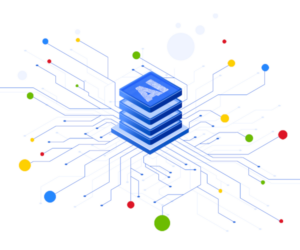Artificial Intelligence (AI) has come a long way since its inception in the 1950s, and machine learning has been one of the key drivers behind its growth. With advancements in the field, the AI landscape has changed dramatically, and AI models have become much more sophisticated and human-like in their abilities. One such model that has received a lot of attention lately is OpenAI’s ChatGPT, a language-based AI model that has taken the AI world by storm. In this blog post, we’ll take a deep dive into the technology behind ChatGPT and its fundamental concepts.

How ChatGPT Works
ChatGPT is an AI language model developed by OpenAI that uses deep learning to generate human-like text. It uses the transformer architecture, a type of neural network that has been successful in various NLP tasks, and is trained on a massive corpus of text data to generate language. The goal of ChatGPT is to generate language that is coherent, contextually appropriate, and natural-sounding.
The Technologies Used by ChatGPT
ChatGPT is built on several state-of-the-art technologies, including Natural Language Processing (NLP), Machine Learning, and Deep Learning. These technologies are used to create the model’s deep neural networks and enable it to learn from and generate text data.
Natural Language Processing (NLP)
NLP is the branch of AI that deals with the interaction between computers and humans using natural language. It is a crucial part of ChatGPT’s technology stack and enables the model to understand and generate text in a way that is coherent and natural-sounding. Some common NLP techniques used in ChatGPT include tokenization, named entity recognition, sentiment analysis, and part-of-speech tagging.
Machine Learning
Machine Learning is a subset of AI that involves using algorithms to learn from data and make predictions based on that data. In the case of ChatGPT, machine learning is used to train the model on a massive corpus of text data and make predictions about the next word in a sentence based on the previous words.
Deep Learning
Deep Learning is a subset of machine learning that involves training neural networks on large amounts of data. In the case of ChatGPT, deep learning is used to train the model’s transformer architecture, which is a type of neural network that has been successful in various NLP tasks. The transformer architecture enables ChatGPT to understand and generate text in a way that is coherent and natural-sounding.
The Architecture of ChatGPT
ChatGPT is based on the transformer architecture, a type of neural network that was first introduced in the paper “Attention is All You Need” by Vaswani et al. The transformer architecture allows for parallel processing, which makes it well-suited for processing sequences of data such as text. ChatGPT uses the PyTorch library, an open-source machine learning library, for implementation.
ChatGPT is made up of a series of layers, each of which performs a specific task.
The Input Layer
The first layer, called the Input layer, takes in the text and converts it into a numerical representation. This is done through a process called tokenization, where the text is divided into individual tokens (usually words or subwords). Each token is then assigned a unique numerical identifier called a token ID.
The Embedding Layer
The next layer in the architecture is the Embedding layer. In this layer, each token is transformed into a high-dimensional vector, called an embedding, which represents its semantic meaning.
This layer is followed by several Transformer blocks, which are responsible for processing the sequence of tokens. Each Transformer block contains two main components: a Multi-Head Attention mechanism and a Feed-Forward neural network.
The Transformer Blocks
Several Transformer blocks are stacked on top of each other, allowing for multiple rounds of self-attention and non-linear transformations. The output of the final Transformer block is then passed through a series of fully connected layers, which perform the final prediction. In the case of ChatGPT, the final prediction is a probability distribution over the vocabulary, indicating the likelihood of each token given the input sequence.
The Multi-Head Attention Mechanism
The Multi-Head Attention mechanism performs a form of self-attention, allowing the model to weigh the importance of each token in the sequence when making predictions. This mechanism operates on queries, keys, and values, where the queries and keys represent the input sequence and the values represent the output sequence. The output of this mechanism is a weighted sum of the values, where the weights are determined by the dot product of the queries and keys.
The Feed-Forward Neural Network
The Feed-Forward neural network is a fully connected neural network that performs a non-linear transformation on the input. This network contains two linear transformations followed by a non-linear activation function. The output of the Feed-Forward network is then combined with the output of the Multi-Head Attention mechanism to produce the final representation of the input sequence.
Tokenization and Tokens in ChatGPT
Tokenization is the process of dividing the input text into individual tokens, where each token represents a single unit of meaning. In ChatGPT, tokens are usually words or subwords, and each token is assigned a unique numerical identifier called a token ID. This process is important for transforming text into a numerical representation that can be processed by a neural network.
Tokens in ChatGPT play a crucial role in determining the model’s ability to understand and generate text. The model uses the token IDs as input to the Embedding layer, where each token is transformed into a high-dimensional vector, called an embedding. These embeddings capture the semantic meaning of each token and are used by the subsequent Transformer blocks to make predictions.
The choice of tokens and the tokenization method used can have a significant impact on the performance of the model. Common tokenization methods include word-based tokenization, where each token represents a single word, and subword-based tokenization, where tokens represent subwords or characters. Subword-based tokenization is often used in models like ChatGPT, as it helps to capture the meaning of rare or out-of-vocabulary words that may not be represented well by word-based tokenization.
The Training Process of ChatGPT
The training process of ChatGPT is a complex and multi-step process. The main purpose of this process is to fine-tune the model’s parameters so that it can produce outputs that are in line with the expected results. There are two phases in the training process: pre-training and fine-tuning.
Pre-training is a phase where the model is trained on a large corpus of text data, so it can learn the patterns in language and understand the context of the text. This phase is done using a language modeling task, where the model is trained to predict the next word given the previous words in a sequence. The main objective of this phase is to obtain the representation of text data in the form of token embeddings. These token embeddings are learned through the transformer encoder blocks that are trained on the large corpus of text data.
Fine-tuning is a phase where the pre-trained model is further trained on the specific task it will be used for. This task can be anything from answering questions to generating text. The objective of this phase is to adapt the model to the specific task and fine-tune the parameters so that the model can produce outputs that are in line with the expected results.
One of the most important things in the fine-tuning phase is the selection of the appropriate prompts. The prompt is the text given to the model to start generating the output. Providing the correct prompt is essential because it sets the context for the model and guides it to generate the expected output. It is also important to use the appropriate parameters during fine-tuning, such as the temperature, which affects the randomness of the output generated by the model.
Once the training process is complete, the model can be deployed in a variety of applications. The token embeddings and the fine-tuned parameters allow the model to generate high-quality outputs, making it an indispensable tool for natural language processing tasks.
OpenAI will release soon also GPT-4, which is the latest version of the GPT family. GPT-4 is an even more advanced version of GPT-3, with billions of parameters compared to GPT-3’s 175 billion parameters. This increased number of parameters means that GPT-4 will handle even more complex tasks, such as writing long-form articles or composing music, with a higher degree of accuracy.
Other models from OpenAI
OpenAI has created several other language models, including DaVinci, Ada, Curie, and Babbage. These models are similar to ChatGPT in that they are also transformer-based models that generate text, but they differ in terms of their size and capabilities.
- DaVinci is the largest language model created by OpenAI, with over 175 billion parameters. It is capable of generating human-like text, answering questions, and translating between languages.
- Ada is a smaller version of DaVinci, with a focus on answering questions. It has a more specialized architecture that is designed specifically for Q&A tasks.
- Curie is designed for tasks that require more structured output, such as generating code or summarizing text. It has a more specialized architecture than ChatGPT or Ada.
- Babbage is a smaller version of ChatGPT that is designed for use in resource-constrained environments. It can still generate human-like text, but is less capable than ChatGPT in terms of its ability to generate text.
Each of these models has its own strengths and weaknesses, and choosing the right model for a given task will depend on the specific requirements of the task. OpenAI provides resources and documentation on each of these models to help users understand their capabilities and how to use them effectively.
If you are curious to try those other models in a style similar to ChatGPT, I have created a chat window that connects to the other OpenAI models for this exact purpose, that you can easily setup on your local machine. You can find it here – https://github.com/ahutanu/openai-chat-window
Conclusion
In conclusion, ChatGPT is a cutting-edge language model developed by OpenAI that has the ability to generate human-like text. It works by using a transformer-based architecture, which allows it to process input sequences in parallel, and it uses billions of parameters to generate text that is based on patterns in large amounts of data. The training process of ChatGPT involves pre-training on massive amounts of data, followed by fine-tuning on specific tasks.
The use of prompts and parameters is critical in the functioning of those models, as it determines the context and output of the generated text. In addition, OpenAI has developed several other models for natural language processing tasks, such as DaVinci, Ada, Curie, and Babbage, each with its own strengths and weaknesses.
At Pentalog, our mission is to help businesses leverage cutting-edge technology, such as AI systems, to improve their operations and drive growth. We are already testing its viability in Products Development, along our Technology Office, and we are very happy with the results so far and the experience we are gaining in this. By leveraging further our experience in this domain, we can help businesses choose the right tool for the job and enable them to harness the power of AI to create a competitive advantage. Whether you are looking to generate high-quality content, answer questions, or generate structured data, or any other use case, Pentalog can help you achieve this.
Sources:
- OpenAI’s GPT-3
- The Illustrated Transformer by Jay Alammar
- Attention is All You Need paper
- Learn Natural Language Processing by Siraj Raval
- An Overview of OpenAI’s Models by OpenAI
- OpenAI API documentation
- Philosophers on GPT-3
- Fine-tuning Language Models from Human Preferences
- ChatGPT Explained in 5 Minutes
- How Does ChatGPT work by ByteByteGo
- How ChatGPT actually works
- Hugging Face AI Community GPT-3 Models








